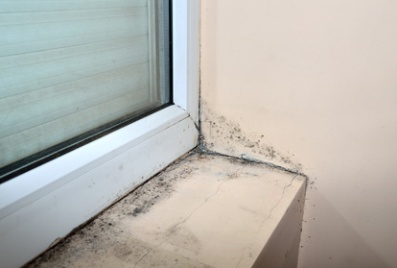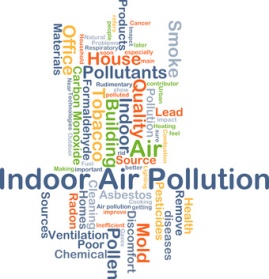Find a Mold Specialist Now
Click or Call, Toll-Free 24/7
Indoor Air Quality Concerns
I.A.Q., or Indoor Air Quality, is an often underestimated issue. Not many homeowners know how to properly take care of their environment, but the problem does not only revolve around homes. According to U.S. Environmental Protection Agency (EPA), people actually spend 90% of their time indoors, where the pollutants can actually be 2 to 5 times higher than outdoors. Needless to say, this applies to any building we spend time in, be it your apartment, your office/workplace, or even schools, hospitals and means of transport.
One may think of air pollution as a problem commonly associated with the outdoors, but truth is, air inside buildings is often more polluted. But what exactly are the threats related to a bad Indoor air quality? Symptoms can stem from mild ones, such as impaired concentration and decision-making, sleep disorder, headaches and eyes, nose and throat irritation, to the more severe, that include chronic migraines, asthma, lung cancer and alterations to the immune and nervous system. In Europe, 90.000 deaths are linked every year to indoor air pollution.
In a closed environment, numerous chemicals and other harmful compounds are continuously released into the air we breathe. And while some of these pollutants originate outdoors, most of them actually come from indoor sources.
Outdoor pollutants can enter buildings through ventilation, open windows and structural cracks, as well as when people enter the building inadvertently bringing in dust and contaminants from the outside.
Indoor pollutants can come from combustion sources as well as chemical ones, originating from the products we use. Building materials and new furniture can also contribute to the problem, releasing volatile organic compounds (VOCs) into your air.
An insufficient ventilation or an unconcerned occupant behaviour can also lead to a considerable increase in the pollutants concentration. But let’s see what are the main sources of harm to your indoor air quality:
Byproducts of Combustion
Fireplaces, stoves, boilers, and furnaces are among the most common sources of potentially harmful and toxic air pollutants, including carbon monoxide, carbon dioxide, nitrogen dioxide and airborne particles.
Recent studies show that continuous exposure even to low concentrations of Carbon Monoxide (also known as the silent killer) can, for instance, increase the risks of developing asthma and may cause long lasting heart damage. During pregnancies, chronic exposure can lead to low birth weight and damage to the fetal brain. According to the World Health Organization (WHO), about 1.5 million deaths each year are estimated to be associated with indoor byproducts of combustion, mostly among women and children in underdeveloped countries.
Biological Agents
Microbial pollution is one of the main sources of indoor air pollution. It mainly includes molds, the most common forms of fungi, able to grow on almost any material. They reproduce through spores – that can be found both indoors and outdoors – and begin growing when they land on a moist surface. Indoors, mold growth is primarily caused by an excess of moisture, excessive heating and/or lack of ventilation. A prolonged exposure to mold-contaminated materials may cause allergic reactions and other adverse health effects. Other contaminants of natural origin include radon (a colorless and odorless radioactive gas that seeps into buildings from the surrounding soil and can cause lung cancer in the long run) and pet dander.
 Mold from window leak
Mold from window leakChemical Agents
Cleaning supplies, disinfectants and aerosols as well as cosmetic and hobby products release potentially harmful volatile organic compounds (VOCs). Not to be underestimated is also the use of pesticides, air fresheners and cleaners containing fragrances, ammonia or chlorine. Constant and sometimes unnecessary cleaning may have various effects on your health, ranging from irritation to eyes, throat and nose, to strong headaches. In more severe cases, long-term effects might arise, including damage to liver or kidneys and pathologies of the nervous system.
Building Materials
Non-natural paints, varnish, adhesives, wall boards, ceiling tiles and pressed-wood as well as resins and insulation materials release dangerous VOCs, such as formaldehyde, acetaldehyde, pienene, benzene and toluene. Health effects from exposure to high concentrations of VOCs include headaches and irritation to the eyes and throat, which often develop soon after exposure. However, recent studies looking at longer-term exposure have shown a correlation between formaldehyde and leukemia as well as an increased risk of brain cancer development.
While being a health issue for everyone, those more at risk are often young children and elders. The former don’t have fully developed lungs yet and breathe up to three times more per kilogram of body weight than adults, while the latter tend to spend even more time inside than normal, resulting in increased exposure to airborne pollutants.
What you can’t see can still harm you, and prevention is key to controlling indoor air pollution. Of course, the first thing to do is monitoring, an essential task to maintain a healthier home. Having a clear view on your environment is key to understanding if and what is threatening your health and where the invisible issues may be hiding, but actions need to be taken both for prevention and recovery.
Preventing Indoor Air Quality Issues
- Monitor. Have a carbon monoxide detector installed in your home. Also, make sure to provide adequate monitoring for humidity, volatile organic compounds and radon.
- Keep humidity levels in place. Humidity should never be too high (too much moisture is crucial for mold growth) nor too low (you do not want to catch a cold or experience dry skin). Optimal humidity levels should therefore range from 30 to 50%. A hygrometer can be used to monitor levels.
- Improve airflow. Let some fresh air in. Open all your windows for at least 5 minutes, twice a day or more possibly.
- Repair leaks. It is very important to take care of leaks right away, taking immediate action to prevent mold growth.
- Replace your air filters. It is recommended to change your air filters at least once every 12 months, and checking them monthly to ensure they’re not blocking air flow and wasting energy.
- Dust your home regularly. Prevent allergen build up, as well as other pollutants. Remember to use a damp cloth to avoid spreading dust around, and remember to vacuum at least once a week.
- Avoid smoking indoors. Needless to say, tobacco smoke is very dangerous for your domestic air, containing high concentrations of harmful pollutants.
- Choose your cleaning products accurately. Many cleaners actually contribute to a bad indoor air quality, as they emit dangerous chemicals in your environment. Go natural, or select eco-friendly cleaning products free of synthetic fragrances, ammonia and chlorine.
- Off with your shoes! A good choice would be leaving your shoes at the door, to prevent outside dirt and allergens from coming inside. Also, use door mats at all entrances.
- Water your plants – but not too much! Plants have been proven to enhance air quality indoors. Over-watering, though, may encourage mold growth, so be careful.
- Renovate responsibly. If you want to renovate your place, consider only using low or no VOC paints. Also, if you buy new furniture let it air out for some time, as it can – and will! – release lots of VOCs.
- Groom your pets often. But remember to do it outside, so the air in your home stays clean!
Return From Indoor Air Quality To Our Black Mold Health Symptoms Home Page
About The Author:
Airgloss combines leading-edge technology with the commitment to offer new solutions for healthier environments, placing useful innovation within everyone’s reach. We designed a unique gas sensing technology for indoor environmental monitoring, a versatile solution with the ability to detect a wide range of airborne contaminants and automatically control HVAC and air purification systems, to improve indoor air quality, energy efficiency and provide healthier living spaces.
References:
EPA's Report on the Environment
WHO Guidelines for Indoor Air Quality
EPA - Rules and Regulations That Impact Children's Health
A Study of Interior Landscape Plants for Indoor Air Pollution Abatement
Royal College of Physicians and Royal College of Pediatrics and Child health





